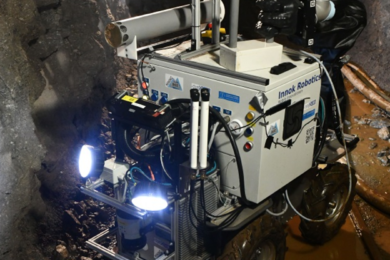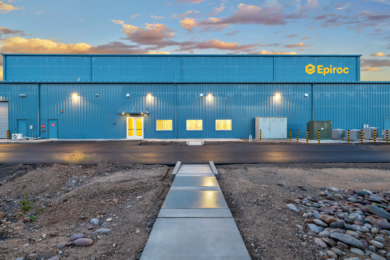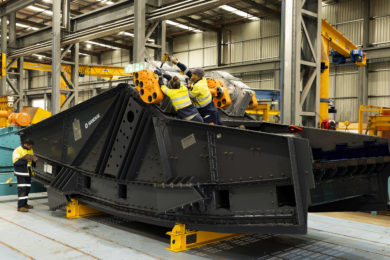Personal protective equipment, automated or remote-controlled machinery, and safety instructions all help to avoid accidents underground. Nevertheless, there are still a lot of dangerous situations in mining, in which the risk to humans is too high. By using modern technologies, ie robotics, many believe that this situation can and should be overcome. The interdisciplinary research project ARIDuA (Autonomous robots and the Internet of Things in underground mining) is dealing with autonomous systems and the development and implementation of the Internet of Things (IoT) in underground mining. The ESF-funded project (European Social Fund), which runs until mid-2020, aims to develop an autonomous moving robot for the installation and maintenance of underground IoT infrastructure.
The aim is to benefit from the synergetic effects of IoT and robotics. As an example, a mobile autonomous robot, in combination with a wireless sensor network (WSN), can help to explore unknown or inaccessible areas in an underground environment. These could be both, either active mines in case of a current hazardous situation or abandoned mines in which unpredictable risks are too severe for human activity. The application of an automated technology, which can be operated from a distant position and most important, a safe area, will increase the safety of the miners.
At the TU Bergakademie Freiberg a prototype of such an underground mining robot, named ‘Julius’, was developed. It has been successfully tested in the Research and Teaching mine ‘Reiche Zeche,’ a historic silver-lead-zinc mine. Through the combination of data perceived by the robot and the WSN, a self-developed prototypical wireless sensor network, junior researchers of the ARIDuA group have collected and processed numerous information about air quality (ie temperature, pressure, humidity, and gas concentrations) and geology, as well as produced a map and a textured 3D model of a drift system in the Reiche Zeche mine.
Julius was retrofitted to withstand the mine’s environment and meet ARIDuA’s objectives. In particular, its robotic arm and hand are protected by a rubber covering. Furthermore, it comprises LED spotlights, optical sensors eg 2D laser scanners, a 3D laser scanner and colour and depth cameras. Several sensor boxes are carried on top. The chassis was upgraded to protection standard IP67.
With its sensors and computational power, the robot is able to drive autonomously, ie it is able to steer and accelerate automatically and detect obstacles. Members of ARIDuA tested two types of navigation strategies: absolute and relative navigation. The former requires mapping an area beforehand and placing points on the map. With these preconditions, the robot is able to localise itself in the map and drive autonomously from one point to another. The mapping algorithm uses the front camera and therefore depends on light. The latter navigation strategy does not require a map and uses the robot’s environment for orientation and navigation. The implemented algorithm uses the 3D laser scanner and thus does not
depend on light.
At APCOM 2019 in Wroclaw, a presentation from ARIDuA focussed on the development process and use-cases of this technology. The next steps will be to improve existing developments, in particular robust autonomous navigation and a mobile wireless sensor network with increased ranges. As soon as this has been achieved, the individual technologies will be connected. In the future, the robot should be able to set up the sensor network with its arm autonomously and the data should be evaluated automatically. After stable test operation, the final step will be to test the technologies in other mines as well.










